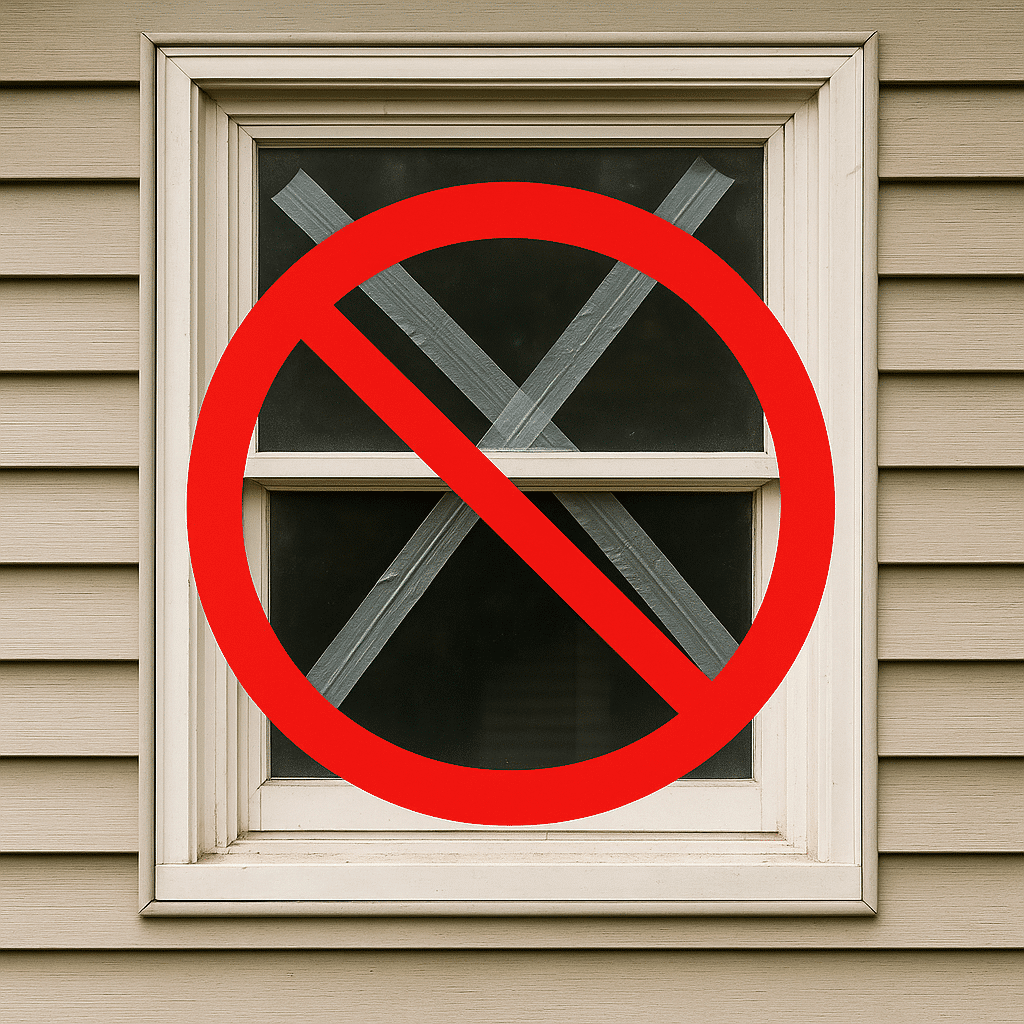
Given the unique climate of Florida characterized by high humidity, intense heat, and the ever-present threat of hurricanes, the selection of replacement windows is far more than a question of aesthetics. From energy efficiency to hurricane protection, the right choice in high-performance solutions can indeed make a very huge difference. This is where window ratings come into play.
In this guide, we’ll break down the following question, “What are the basic window ratings?” Also, we teach you how to read and understand these performance metrics, and which ones are most important for homeowners from states like Florida.
Window Rating Standards for Florida Homes

Various organizations develop and certify performance metrics for windows, providing ratings that reflect their energy efficiency, durability, and overall performance. The most well-known and respected among them are the National Fenestration Rating Council (NFRC), Energy Star, and Lawrence Berkeley National Lab (LBNL). Their occupations help make sure your window replacement meets crucial benchmarks for energy efficiency, durability, and protection from the elements. Let’s take a closer look at their roles!
The National Fenestration Rating Council (NFRC)
The NFRC offers comprehensive, independent performance assessments for windows, doors, and skylights. To help homeowners compare the products, they display their ratings on the labels. The performance metrics are based on factors like U-factor, Solar Heat Gain Coefficient (SHGC), visible transmittance, air leakage, and condensation resistance.
Lawrence Berkeley National Lab (LBNL)
The research team at Lawrence Berkeley National Lab plays a vital role in increasing the energy efficiency of windows and buildings. Thus, in its work, the LBNL uses advanced technology development and software tools. Its specialists collaborate with various scientists and testing facilities. Lawrence Berkeley National Lab (LBNL) contributes to research that helps inform organizations like the National Fenestration Rating Council and the U.S. Department of Energy (DOE) in setting benchmarks for energy efficiency standards in window ratings.
ENERGY STAR Certified Windows
This program certifies that your replacement windows meet federal standards for energy efficiency and sustainability. ENERGY STAR is supported by the government and ruled by the U.S. Environmental Protection Agency (EPA). To become Energy Star-rated solutions, windows must be:
- Manufactured by an Energy Star partner
- Independently tested, certified, and verified by the National Fenestration Rating Council (NFRC)
- Meet strict guidelines determined by the EPA
Knowing how to read window energy performance ratings for ENERGY STAR products is essential in states with extreme weather like Florida. Homeowners can use them to reduce their environmental impact while saving significantly on energy bills over time.
Key Factors That Impact Window Performance

Different ratings describe and measure the performance of windows in several areas. Keep in mind that high and low scores don’t necessarily indicate that they are good or bad. Here are some of the key factors that are considered when creating window performance ratings.
U-factor
The U-factor measures how well a window conducts non-solar heat flow. A lesser U-factor signifies effective insulation, which is crucial in maintaining coolness inside homes during the hot weather in Florida. Thus, replacement windows with low U-factor ratings should be chosen to minimize energy use and, consequently, lower energy costs. U-factor generally ranges from 0.25 to 1.25 and is expressed in Btu/h·ft²·°F.
Solar Heat Gain Coefficient
Measuring how much solar radiation enters the home, the Solar Heat Gain Coefficient is especially important in tropical states like Florida. With its intense sun, it's recommended to opt for replacement windows with a low SHGC, as they block more solar heat and enhance energy efficiency. Consequently, they help reduce utility bills and cooling costs. For example, a window with an SHGC rating of 0.25 will block a significant amount of solar heat compared to one with an SHGC of 0.60.
Visible Transmittance (VT)
How much natural light a window allows into the home is determined by its Visible Transmittance (VT) ratings. A higher VT means more light, but Florida homeowners must consider balancing natural light with concerns like heat and energy efficiency. Visible Transmittance (VT) values typically range from 0.20 to 0.80. Higher numbers allow more natural light to pass through the window.
Air Leakage
This term can be defined as the number of cubic feet of air passing through one square foot of window area in a minute. The lower the leakage value, the tighter the seal. It is important for cooling down the temperature indoors and keeping energy bills low in Florida's humid climate. Industry standards and building codes have been set to require an AL no greater than 0.3 cubic feet per minute per square foot (cfm/ft²), where "cfm" stands for cubic feet per minute and "ft²" relates to square feet. Replacement windows that have ratings close to 0.1 are considered to be the most efficient.
Condensation Resistance
A window’s ability to prevent moisture formation is measured by its condensation resistance rating. It is assessed on a scale from 1 to 100. A higher score in these ratings means the window is better at preventing water buildup, with anything below 50 being less effective. This is particularly critical in Florida, where excessive moisture from high humidity can lead to damage and mold growth over time.
UV Percentage
The UV percentage measures how much ultraviolet light is blocked by a window. Since UV rays contribute to fading in furniture and flooring, homeowners in Florida should look for replacement windows that block a high percentage of UV light. High-quality windows can block up to 99% of harmful UV rays, helping to preserve interior decor and reduce potential skin exposure to UV radiation.
Infrared Percentage
This essential metric of window ratings assesses the percentage of infrared rays that pass through a solution. Infrared-blocking window glass allows reduced heat to enter the home. For this reason, it improves energy efficiency by keeping cooling costs low. For example, low-E (low emissivity) windows are designed to block a significant portion of infrared rays. This helps to keep interiors cooler, making them ideal for warm climates.
The Basics of Impact Window Ratings

In Florida, hurricane window ratings are particularly important. They show how well a window can withstand windborne debris and extreme pressure from hurricanes. This is crucial for meeting Florida window code requirements. This code mandates that windows in hurricane-prone areas meet certain performance thresholds for the safety of your property.
DP Ratings
Design pressure is a rating that indicates how much wind or snow force a window can withstand, measured in pounds of pressure per square foot. For example, a product with a DP rating of 50 can withstand up to 170 mph. Always start with understanding what the number means for the climate in your state. Numbers matter but only if you know what stands behind them.
PG Ratings
Performance Grade Rating includes a wider range of performance metrics than DP one. Thus, it covers air infiltration, structural integrity under stress, and water resistance. It indicates not only the ability to withstand high winds but overall performance in all weather conditions. If a window has a DP50 score, the PG50 means it can handle 50psf of wind and resist 15%-2% of that in water pressure.
How to Read Window Ratings?
In a state hurricane-prone states like Florida, knowing how to understand window ratings is key to preparing for storm season. When looking at the labels, aim to find the U-factor, SHGC, and other performance measures outlined earlier in this post. This gives a clear picture of energy efficiency, its strength, and other essential performance metrics of window ratings. By understanding them, homeowners can choose an option that not only meets Florida window code requirements but also improves the overall comfort and energy efficiency of their homes.
What Are Some of the Rankings that Florida Homeowners Should Consider?

Among the numerous performance metrics that windows have, some are more vital to Florida homeowners. Given the state's high heat, frequent storms, and humidity, these ratings are designed to reflect the performance of windows in such challenging conditions and shouldn’t be overlooked.
- Impact: Your windows in Florida need to withstand the force of hurricanes and strong winds. For the best protection, it's essential to choose an option with high DP and PG impact window ratings.
- Solar Heat Gain Coefficient: With Florida's extreme sunny days, the low score of SHGC blocks heat and consequently reduces cooling costs.
- U-factor: This parameter in ratings denotes the insulation ability of a material to resist heat loss. Homeowners must know that the lower the U-factor, the more effective the cooling.
- Air leakage: A lower number indicates less air leakage. Therefore, less energy will be lost, and indoor temperatures will remain cooler.
Ultimately, we’ve covered most of the key window ratings, you need to understand to pick your perfect replacement windows. Of course, you might have some questions since it’s not easy to immediately decipher all the information. FHIA Remodeling experts are more than happy to provide a free consultation and answer all your possible questions.
Along with a consultation, we offer a wide range of replacement windows, including hurricane-resistant options, with professional installation, all backed by a lifetime warranty. Don’t wait for hurricane season. Prepare now. For that reason, don’t hesitate and contact us!
70% off Installation
18 months no interest no payments





